In my many years of traveling in Italy, I’ve often noticed how kid-friendly and family-centric the country is – but without kids of my own, it’s usually best for me to leave things like writing family travel advice to others! In this case, my friend Mara Gorman has kindly sent me an excellent set of tips for traveling in Italy with children. Mara says she thinks “Italy is a great place to visit with kids,” so I’m glad to know my observations have been correct. Thanks, Mara!
Italy is a country that really has it all – gorgeous scenery that ranges from mountains to beaches, world-class art, incredible food, and millennia of history. Whether you’ve got two weeks or two months, you’ll find that there are plenty of things to do with your family. But Italians have a certain way of doing things that can be either charming or maddening – perhaps seeming more the latter when you’re traveling with jet-lagged kids! Here are some tips for a smooth Italian vacation with your family.
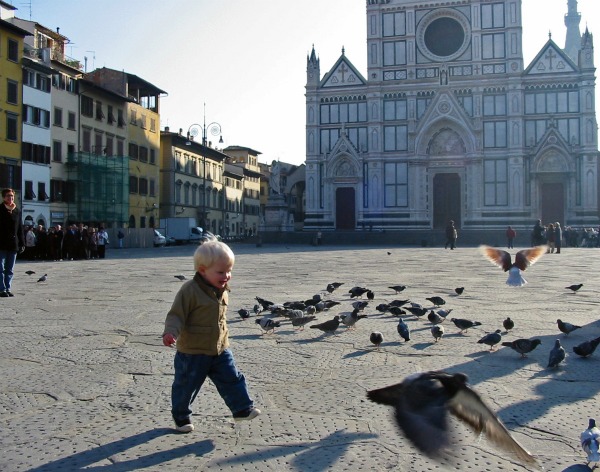
Italy is a big country with lots to see and do. Even if you want to take a trip where you see as much as possible (including the many amazing art museums and churches) think about what your children like to do and include a mix of high and low culture and indoor and outdoor activity. There are simple ways to do his – renting a house or staying in a hotel with a pool, for example, or alternating city museum days with visits to the seaside. And Italian cities are full of parks and squares and castles and gardens – all perfect places for kids to get their wiggles out before or after you commune with Michelangelo.
If you’ve got young children, you might consider spending at least part of your time in a spot frequented by Italian families, which are often have amenities like playgrounds and small amusement parks. Destinations like the Riva Del Garda on the shores of a lake in northern Italy or the beaches of Abruzzo on the central Adriatic coast are used to hosting families. You may find this more relaxing than a visit to Venice with its water, water everywhere (and nothing to prevent little ones from tumbling into the drink) or the hill towns of Tuscany with their towers and steep stairs.
But I also know many families who have happily covered every inch of Italy with toddlers in tow. Thinking about your comfort level and expectations can help you plan the trip that’s right for your family.
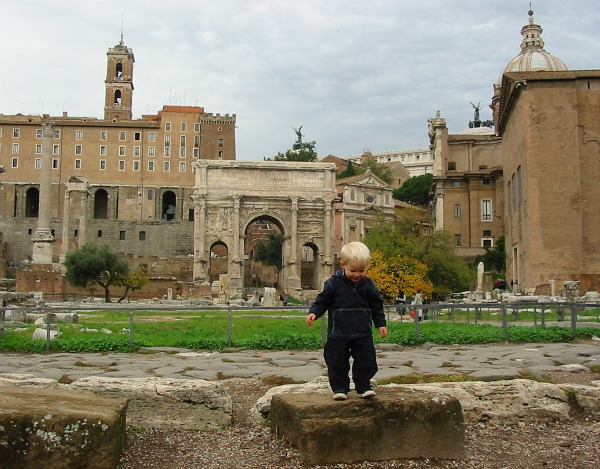
During July and August, Italy’s museums are overrun with tourists while the beaches are full of Italian families on vacation. You’ll also find cities like Venice and Rome packed to the gills during holidays like Christmas or Easter. A simple way to avoid this is to travel during off-peak times – late spring or fall for example.
You won’t necessarily have to sacrifice in terms of weather either; we visited Rome and Florence during the first two weeks of November and enjoyed sunny warm days more often than not with no waiting at any of the museums we wanted to see (the one exception being the Vatican Museums including the Sistine Chapel – I’m pretty sure there’s never an off-season for them). In much of the country, the average temperatures for spring and fall are mild.
If you must travel during high season, it’s advisable to plan ahead wherever possible, making reservations well in advance for lodging and any museums that allow it, and arriving at other attractions early to beat the lines.
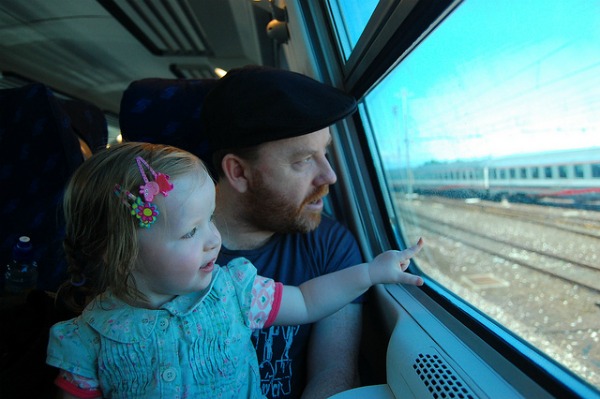
The Italian train system is fairly easy to use, but you’ll want to brush up on its finer points before you go on your trip, which this excellent article can help you do. For one thing, there is a difference between having a ticket and having a reservation for Italian trains (sometimes you need just one; sometimes you need both). Also, you need to validate your ticket before you get on the train. This is not hard to do, but if you’re running late and are navigating the train station with young children, luggage, and a stroller in tow, it’s a detail that can easily be overlooked. Trust me I know from personal experience. We realized at the last minute that we had forgotten and I didn’t enjoy watching my husband race up the platform to leap on the train as the whistle was blowing.
Often a great way to travel in Italy with kids is to use the trains to get between major cities, but rent a car for more rural parts of the way, when you want to explore towns that may not be on the rail line. This also means you aren’t tied to train timetables – always a plus when you’re traveling with kids.
In some parts of Italy, like the Amalfi Coast, local buses are the best way to get from town to town – if putting your little one on a bus is a troubling thought, you might want to consider a different destination or plan to pay for a driving service (unless you’ve got a hankering to conquer those hairpin turns and cliffside drives yourself).
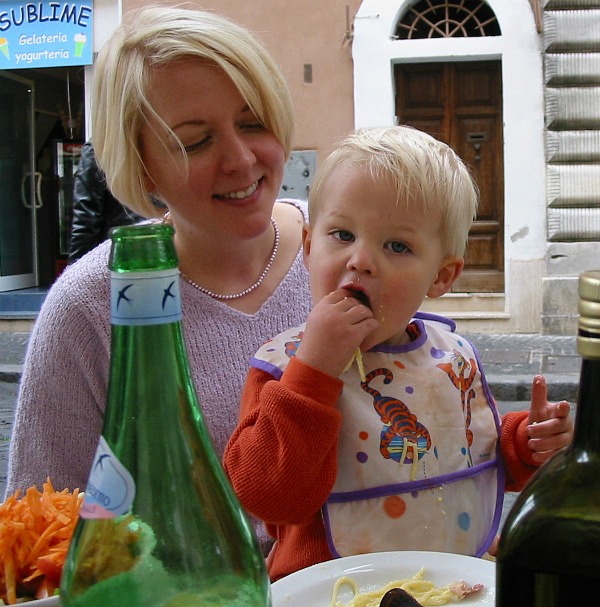
Unless your child is used to staying up and dining at a late hour, you’ll want to prepare your own dinners. Many Italian restaurants don’t even open until 7 in the evening (and in fact, one way to determine if a restaurant is a tourist trap is if it has early dinner hours).
If you live like a local, you can take a nice long lunch in a restaurant (a very pleasant way to break up your sightseeing I might add) and then have dinner at your accommodations. We usually planned museum visits in the morning, with a more active pursuit after lunch. At some point during the later afternoon we’d stop for gelato and then think about heading “home” around 5, stopping at the lovely shops in our neighborhood to pick up prepared foods or salad fixings for our evening meal. We also took advantage of weekly outdoor markets, where we could purchase everything from meat to fish to produce.
If you’re renting an apartment or house, be sure to let the owners know that you’ll be bringing children and how old they are. We’ve been offered everything from cribs to toys to the use of the family laundry facilities by our Italian hosts. This is a culture that values family and most people will do what they can to help you.
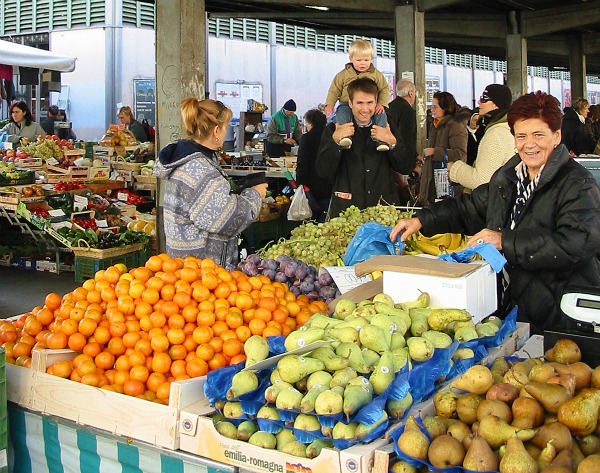
Between the cobblestones and the steps, you’ll find navigating Italian cites with anything larger than a folding umbrella stroller to be tricky. If your child isn’t walking yet or isn’t able to cover distances, consider bringing a backpack carrier as well to make exploring easier.
If you’re with a toddler who has just learned to walk and is eager to do so, bear in mind that you’ll probably want to keep your child strapped into a stroller or carrier when you are walking down the street in Italian cities – cars and mopeds tend to whip around corners when you least expect, and I’ve actually seen drivers smoking and texting while driving, leaving me to wonder just exactly what they are using to steer.
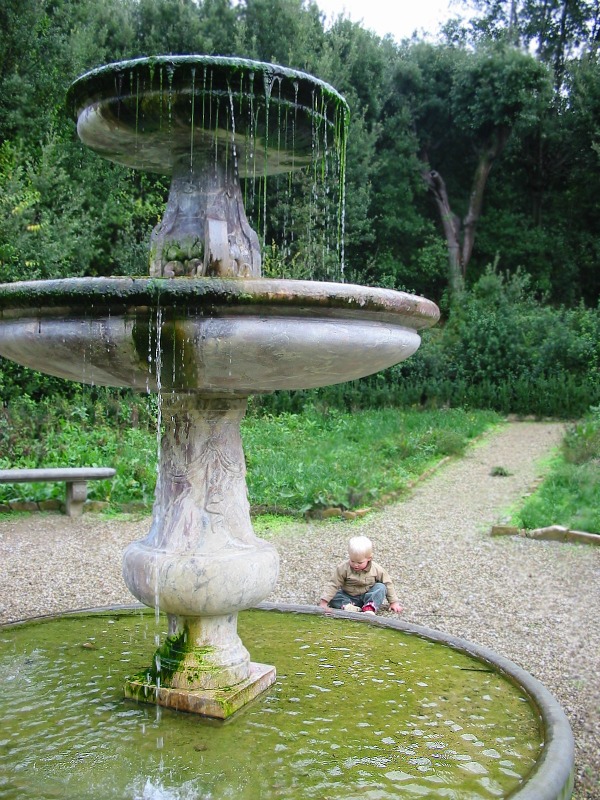
We were charmed by the fact that our apartment in Florence had a small playground just a few steps up the road, but imagine our dismay when we discovered that the gate was locked overnight to be opened (or not) at some point during the morning. Except on Wednesdays, when it didn’t open until the afternoon, if at all. Closer inspection revealed that the hours were posted on a sign to the side of the gate, although they seemed more like guidelines than actual operating hours.
In general, it’s best not to assume that any park, church, or museum you want to visit will be open at the time you choose, even if it’s in the middle of the day on a weekday. Look online, or if your Italian is good enough, call ahead to make sure. Note also that many shops close midday for several hours; it’s best not to plan on picking up a snack or groceries between the hours of noon and three, especially once you get outside the more touristy areas.
And if you can’t do what you were planning to, your best bet is to go native: Shrug your shoulders and move on – preferably to a comfortable spot at the nearest bar (as the Italians call their cafes) for a delicious espresso.
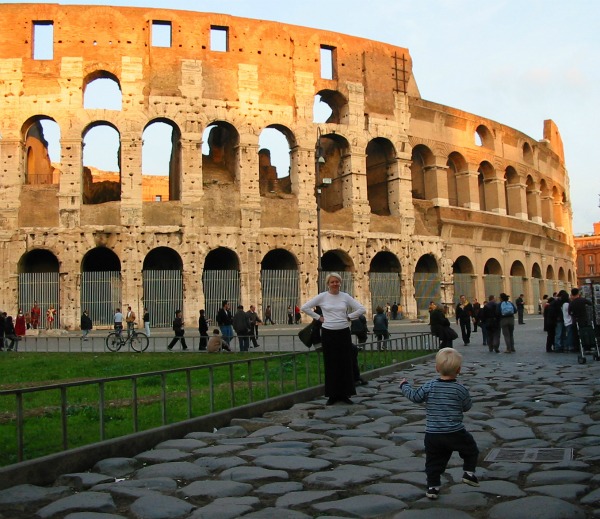
This is a particularly good idea if you have school-age children. Almost every site you visit in Italy will include numerous layers of history – from the ancient Etruscan people to the Romans to the Renaissance to the wars of the early twentieth century. Whether you’re examining tombstones in church graveyards, paintings and sculptures in museums, or ruins of a market or forum, your visit will be more fun and meaningful for your kids with some context. I’m a particular fan of the See Through History series, which allows children to peel away layers and see back through time.
Apps for your smart phone are another way to make sure you’ve got facts at your fingertips while on the road. You might also consider taking a kid-friendly tour – companies like Context Travel offer private guided walks in Rome, Florence, Naples, and Venice, and can customize the information to be family-friendly.

I’d like to pretend that this trip is specific for families, but I actually believe that everyone who visits Italy should take full advantage of the fabulous gelaterias at every opportunity. If your kids don’t come to expect a daily dose of this sweet treat I’m afraid you really aren’t taking full advantage of all that Italy has to offer.
 About the Author:
About the Author:
Mara Gorman has been traveling with her two sons for nearly a decade to destinations ranging from California to Paris. She blogs about their adventures at The Mother of All Trips.
train